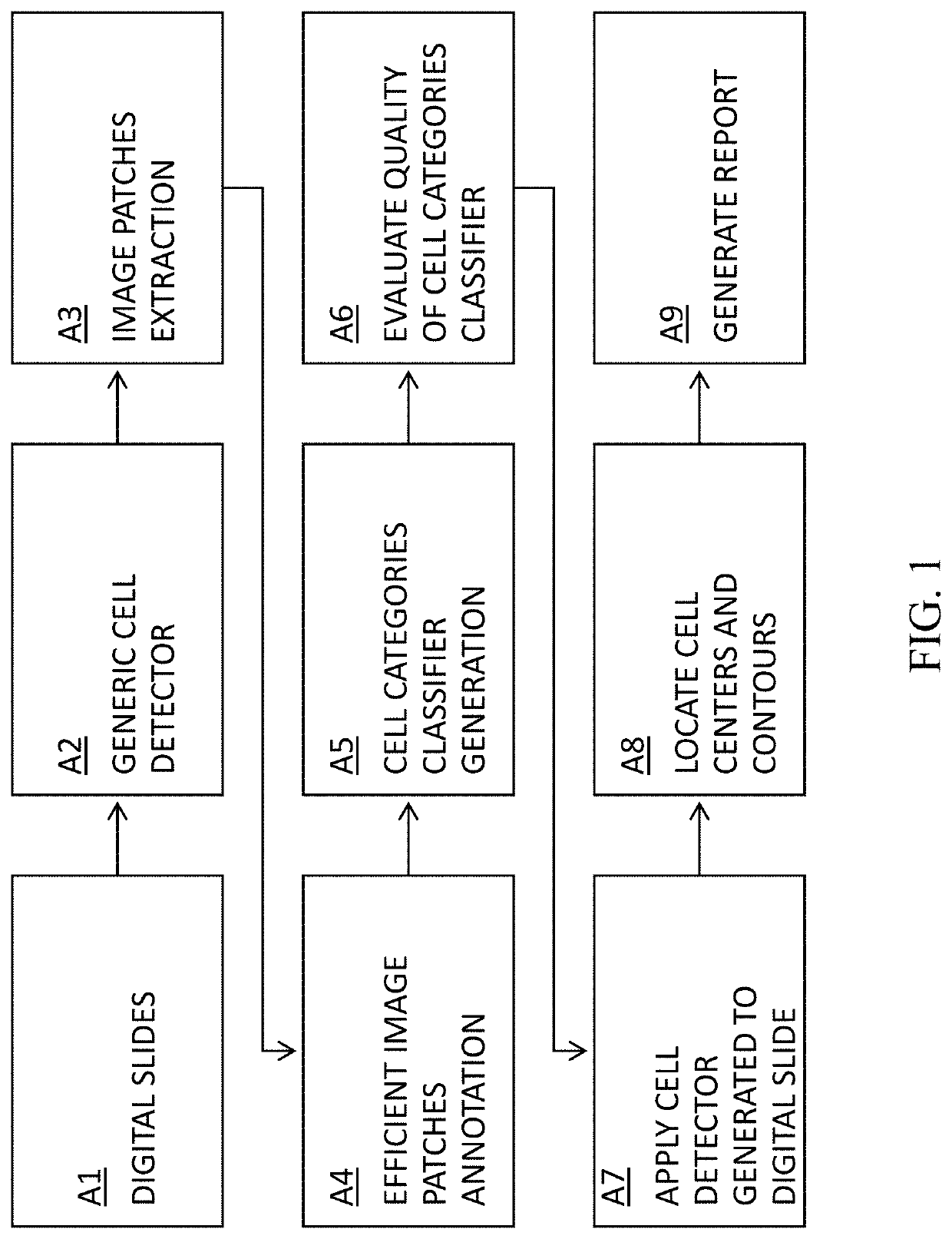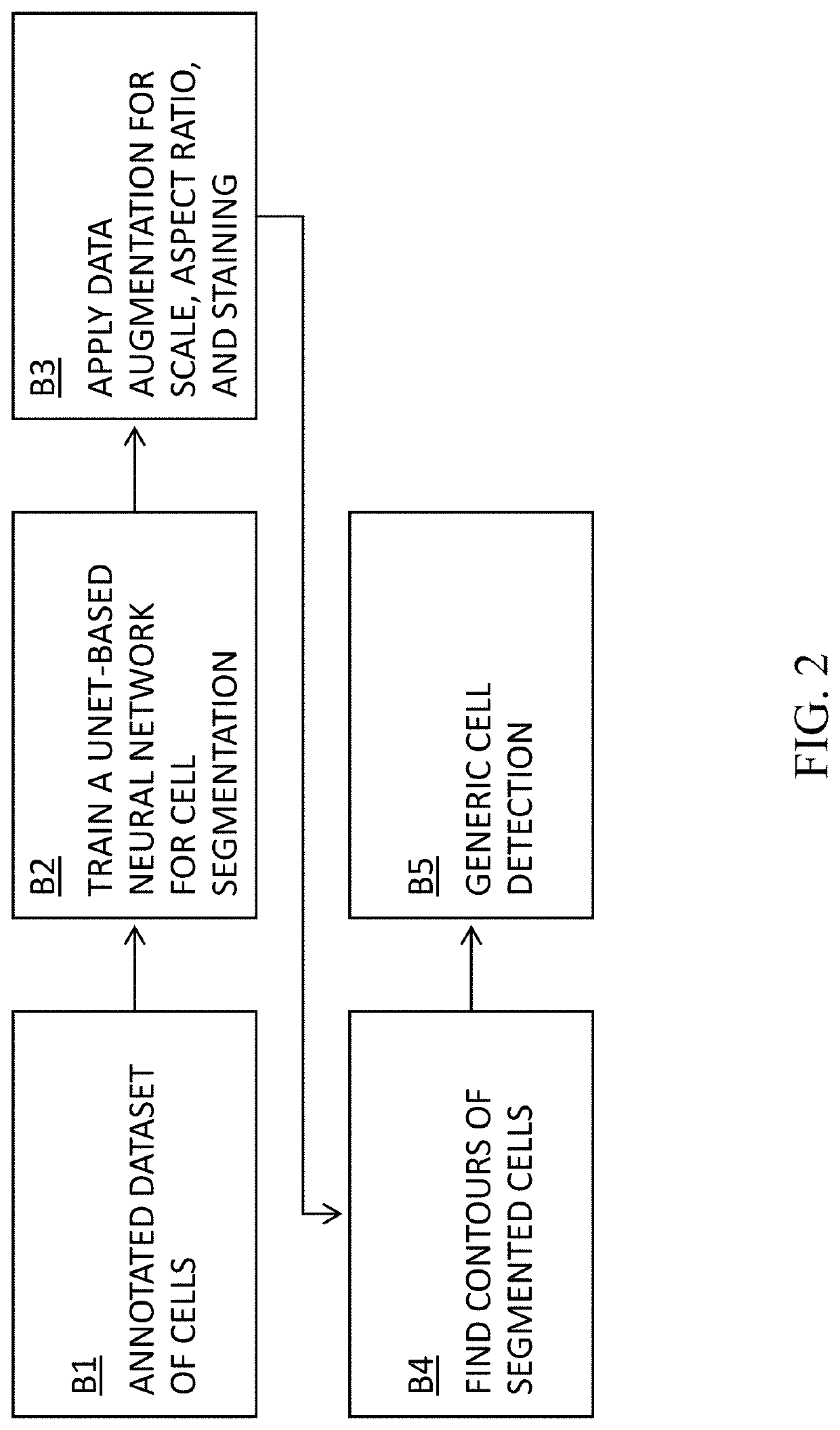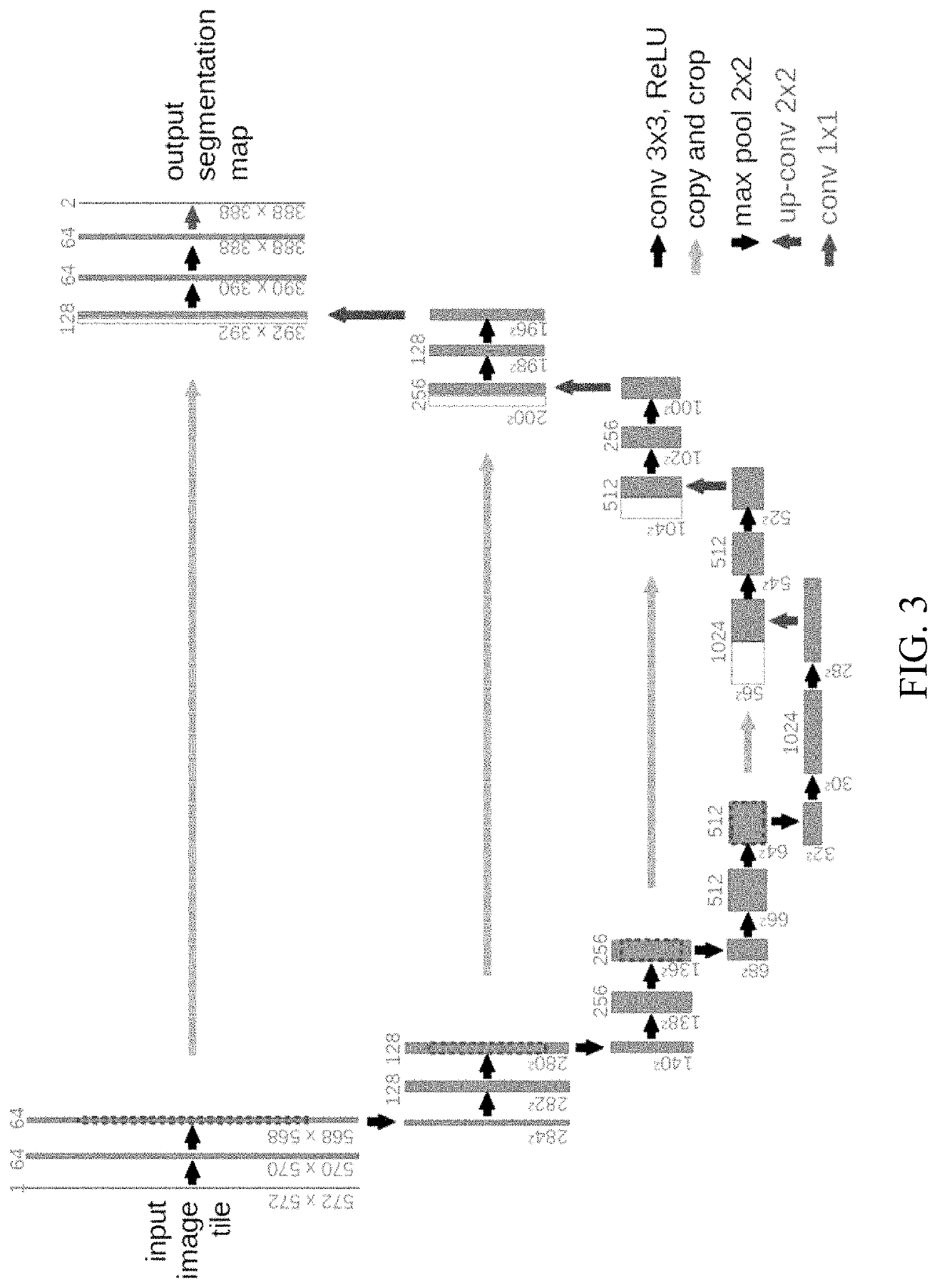Cell Detection Studio: a system for the development of Deep Learning Neural Networks Algorithms for cell detection and quantification from Whole Slide Images
a technology of deep learning and cell detection, applied in the field of system for the development of deep learning neural networks algorithms for cell detection and quantification from whole slide images, can solve the problems of induced errors, manual assessment at whole slide image level is a tedious, time-consuming, and therefore unfeasible task, and achieves the effect of reducing the number of cells
- Summary
- Abstract
- Description
- Claims
- Application Information
AI Technical Summary
Benefits of technology
Problems solved by technology
Method used
Image
Examples
Embodiment Construction
[0030]In the following detailed description, numerous specific details are set forth in order to provide a thorough understanding of the invention. However, it will be understood by those skilled in the art that the present invention may be practiced without these specific details. In other instances, well-known methods, procedures, and components have not been described in detail so as not to obscure the present invention.
[0031]FIG. 1 illustrates a flowchart representation of an embodiment of a method of the invention for Cell Detection Studio. The aim is to provide pathologists and researchers with a tool to create a Deep Learning based cell detection tool according to their requirements. In which digital pathology slides are available A1. The pathology slides are generated from tissue biopsies. These tissue biopsies are sectioned, mounted on a glass slide and stained to enhance contrast in the microscopic image. For example, in some embodiments of the invention, the histological ...
PUM
 Login to View More
Login to View More Abstract
Description
Claims
Application Information
 Login to View More
Login to View More - R&D
- Intellectual Property
- Life Sciences
- Materials
- Tech Scout
- Unparalleled Data Quality
- Higher Quality Content
- 60% Fewer Hallucinations
Browse by: Latest US Patents, China's latest patents, Technical Efficacy Thesaurus, Application Domain, Technology Topic, Popular Technical Reports.
© 2025 PatSnap. All rights reserved.Legal|Privacy policy|Modern Slavery Act Transparency Statement|Sitemap|About US| Contact US: help@patsnap.com



